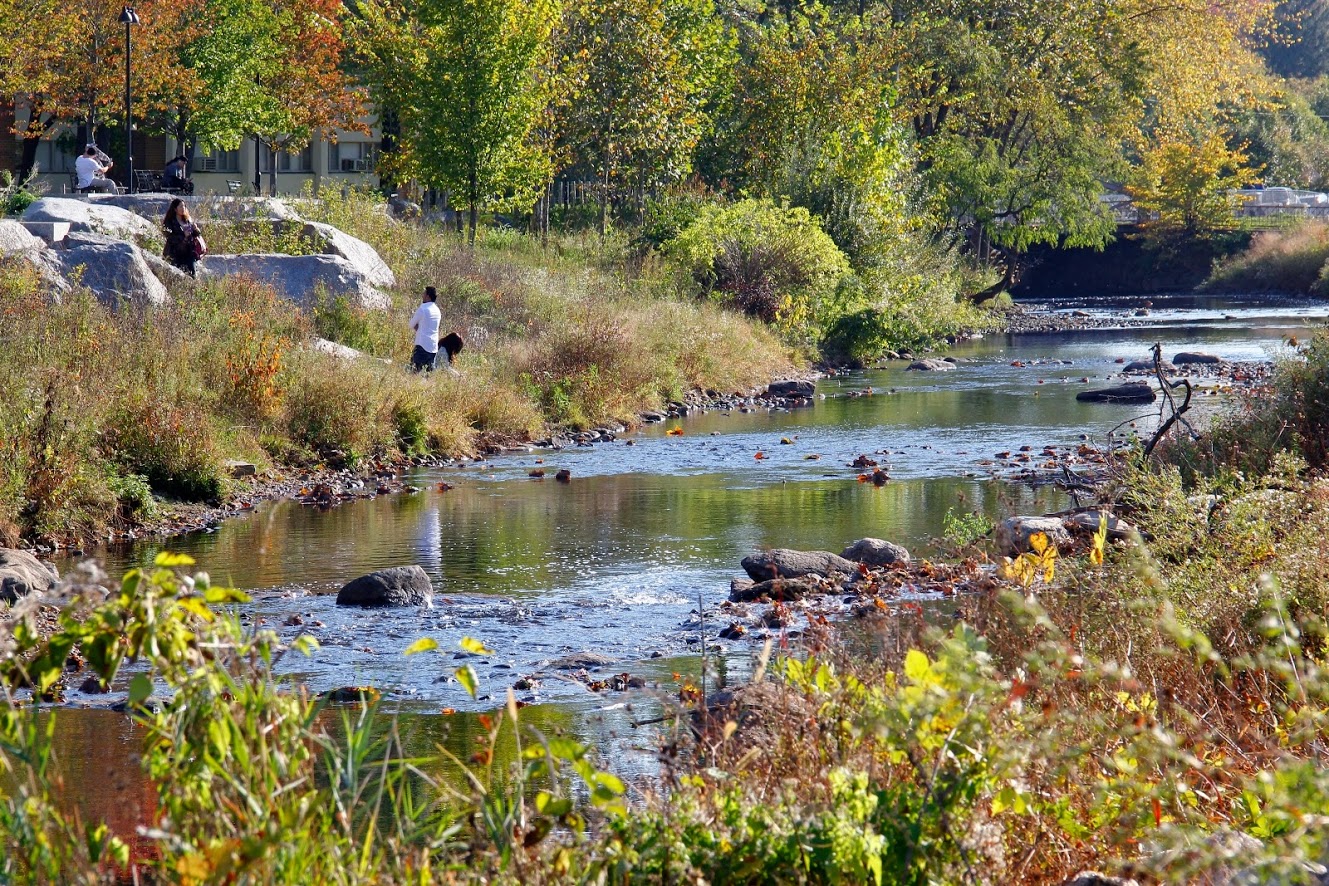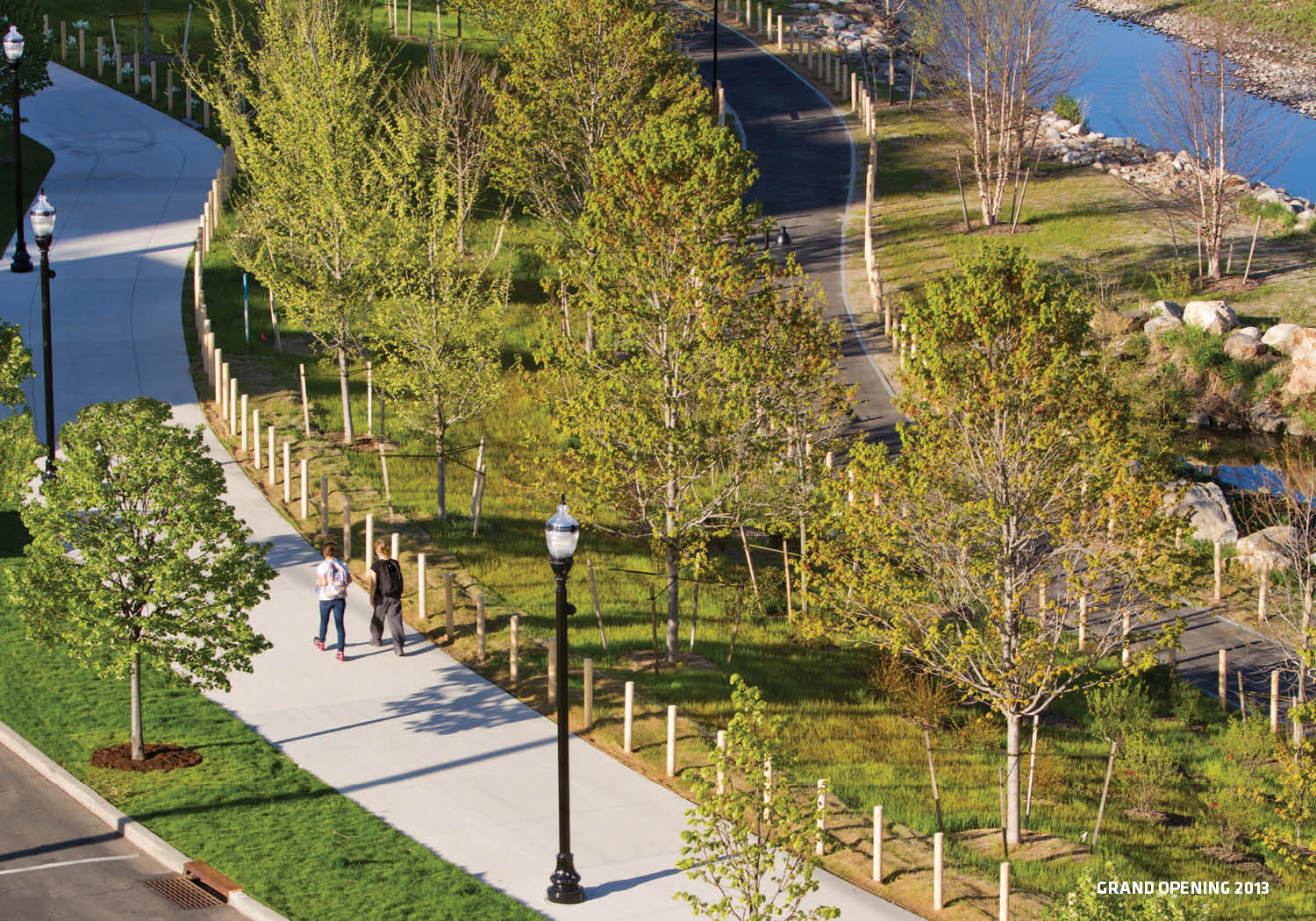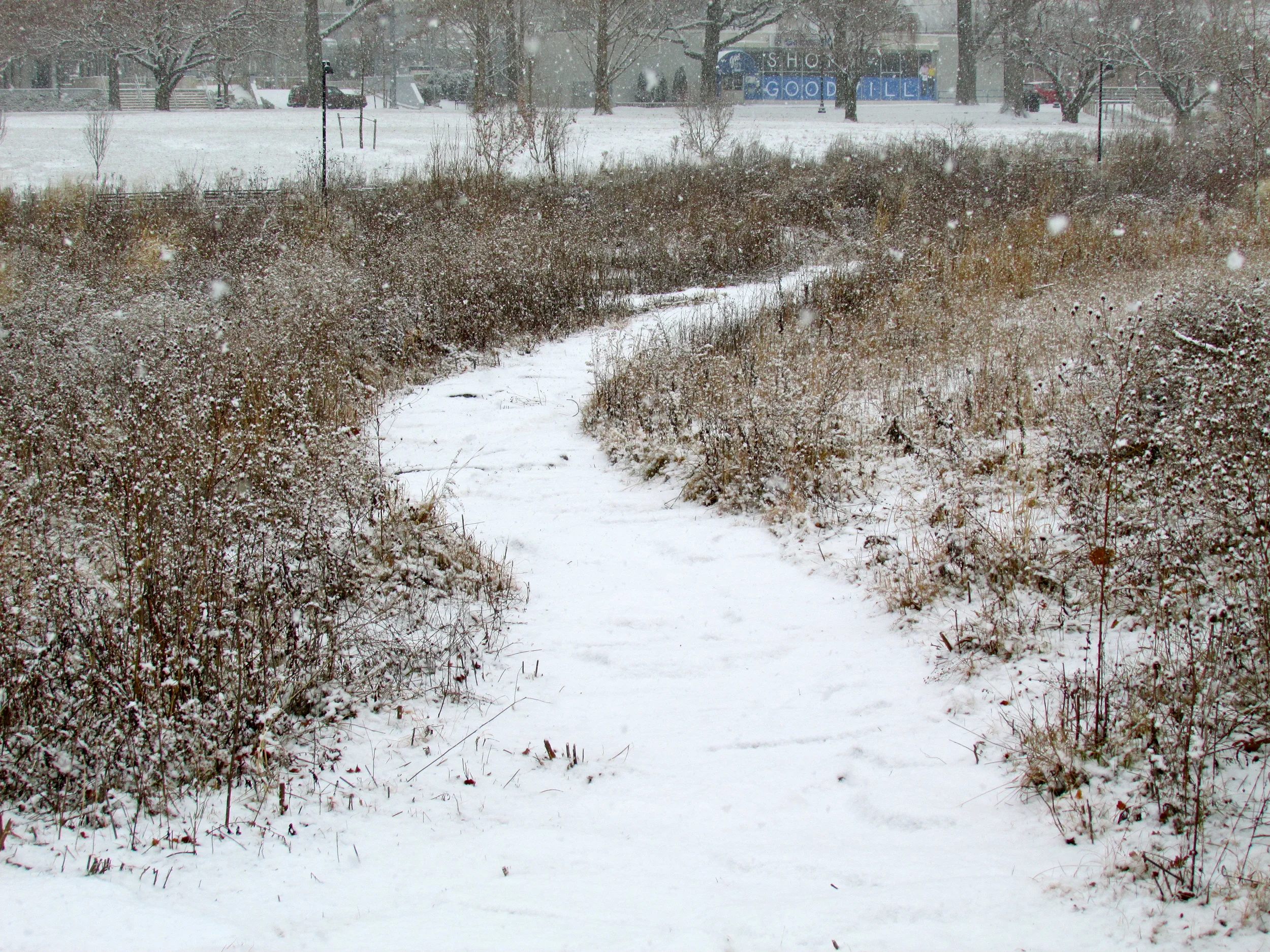© OLIN/Sahar Coston-Hardy
Mill River Park and Greenway Stamford, CT
2013
The Rippowam River, a name given to the meandering waterway by the native Algonquin peoples who once inhabited its banks, has been the backbone of the Stamford community for centuries. The lower nine miles of the Rippowam courses through the center of what is now Downtown Stamford and was coined Mill River in 1642, when the area’s first Puritan settlers dammed the river to create the town’s original gristmill. Ever since, Mill River has been the focus of intense industry and the key to economic prosperity for the area.
Stamford has evolved dramatically over time, from its early stages as a Puritan outpost, to an industrial mill and manufacturing center, to what is now a home base for major corporations. But as with many urban landscapes, Mill River’s natural systems have suffered the ill effects of industrial and economic progress.
Throughout the 20th century, the area around the channelized Mill Pond existed as a network of underutilized lawn areas, paths and benches. Unfortunately the park’s other dominant feature—the river—stood out as a barrier and eyesore, with the imposing concrete walls both inhibiting pedestrian access to the water and compromising the river’s natural ecological systems of flow and drainage. For decades, excessive amounts of silt, branches, trash, and other debris collected in behind the dam, creating a network of unsightly and stagnant pools of brown muck choked with invasive aquatic plants and blooming algae.
© OLIN
In 2005, Stamford and the Mill River Collaborative engaged OLIN to create—in collaboration with the Army Corps of Engineers—a plan to restore the meandering river and craft a vision for the park in the same spirit of the plan that Swan proposed more than 75 years before. The plan aimed to achieve three primary goals: create a park that meets the recreational and civic needs of a diverse population, provide a natural habitat for native flora and fauna to flourish, and offer a vision that is economically viable, maintainable, and implementable in phases over time.
OLIN led a team of ecologists and civil engineers, collaborating with experts to create a comprehensive and ambitious framework for a park and greenway. The end result: a dynamic park that is viable, active and alluring, a continuous programmed edge along the banks of Mill River, and a “green zipper” that brings together neighboring communities with downtown Stamford.
The park provides areas for active and passive recreation, including the Grand Steps, a series of plinths and boulders which invite users to engage with the river’s edge. Another key feature, the Great Lawn, is an expansive green carpet that provides flexible open space for large events and a setting for waterfront entertainment. Thoughtfully placed benches and seating areas along pathways and overlooks encourage moments of contemplation and rest throughout the site. Paving materials were selected for their ability to withstand flooding events. Historic stone walls are maintained, and indigenous stone boulders were unearthed from a nearby construction and incorporated into the project as a celebration of local history and regional geology. A native planting palette is employed across the park—a further expression of regionalism—allowing for educational experiences for residents and visitors. Wildflower blooms and The Cherry Blossom Festival, the largest in New England, provide ephemeral experiences for park users throughout the year. Other programmatic functions, including movies, concerts, and fairs, are scheduled throughout the year by the Mill River Collaborative.
As Mill River Park and Greenway continues to evolve, the commitment and vision by private and public partnerships is firmly in place. Each phase brought to life from the pages of the master plan will weave together the Stamford community, creating a distinctive public realm. The park and greenway will be a place like no other in the region, one that showcases local flora and fauna, restores natural ecological systems, fosters new urban redevelopment, and celebrates community through diverse programming and daily enjoyment.
Will worked on Mill River Park and Greenway as Landscape Architect and Project Manager from 2010 until its completion in 2013.
In collaboration with the Rogers Marvel Architects, Gray Organschi Architects, Army Corp of Engineers, Nitsch Engineering, Tillett Lighting and Habitat by Design.
All Images © OLIN/Sahar Coston-Hardy + Will Belcher
© OLIN/Sahar Coston-Hardy & Will Belcher


















